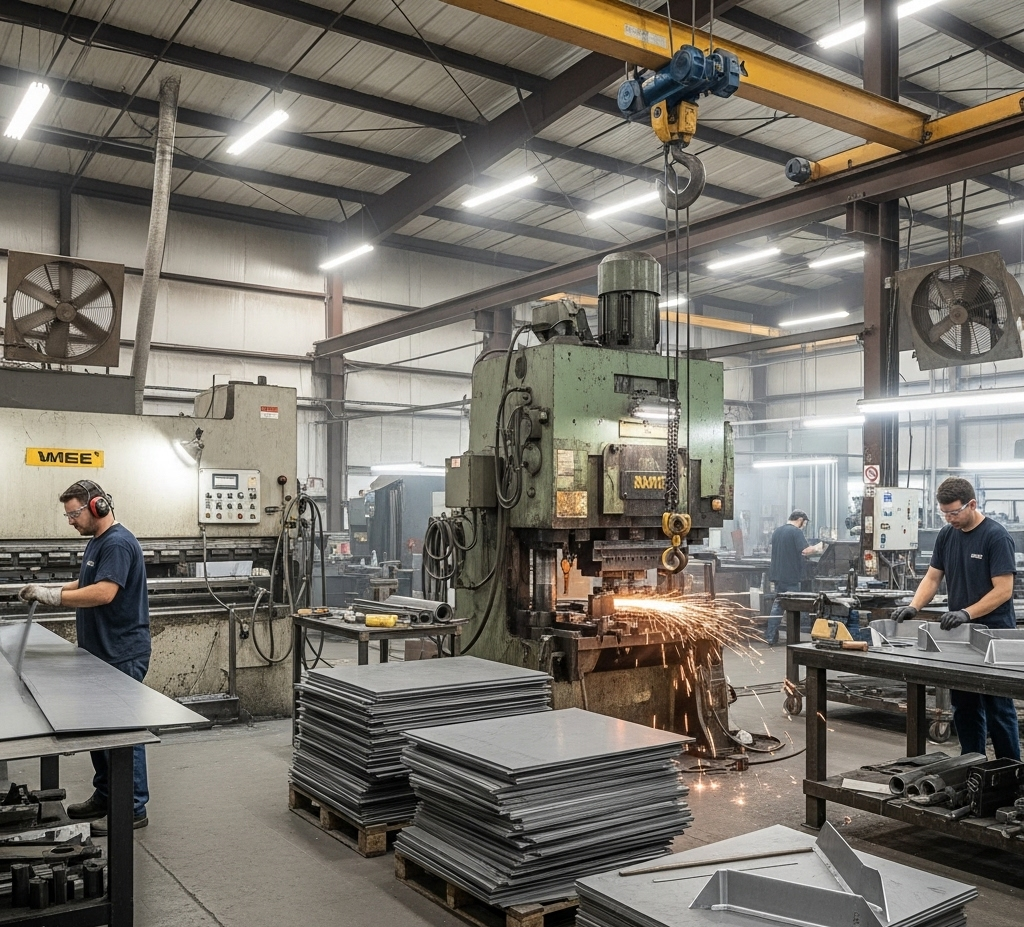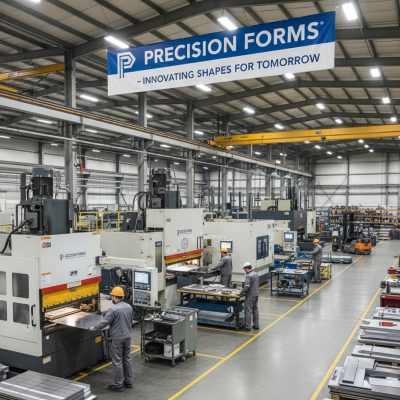In the fast-paced world of small and medium-sized business (SMB) fabrication, efficient procurement is critical to maintaining competitiveness, controlling costs, and meeting tight production deadlines. By leveraging modern technology, SMB fabricators can streamline their procurement processes, reduce errors, and improve overall operational efficiency. This blog post explores how technology can transform procurement in SMB fabrication, offering practical insights and actionable strategies.
The Importance of Efficient Procurement in SMB Fabrication
Procurement in fabrication involves sourcing raw materials, components, and services while balancing cost, quality, and delivery timelines. For SMBs, where resources are often limited, inefficiencies in procurement can lead to delays, increased costs, and missed opportunities. Traditional manual processes—relying on spreadsheets, phone calls, and paper-based systems—are prone to errors and time-consuming. Technology offers a way to overcome these challenges, enabling SMBs to optimize their supply chain and focus on core fabrication tasks.
Key Technologies Transforming Procurement
1. Procurement Software and ERP Systems
Enterprise Resource Planning (ERP) systems and specialized procurement software centralize purchasing activities, providing real-time visibility into inventory, supplier performance, and order statuses. Platforms like Lasso are tailored for SMBs, offering affordable solutions to manage procurement workflows.
Benefits:
Automated purchase order generation reduces manual errors.
Real-time inventory tracking prevents overstocking or stockouts.
Integration with accounting systems ensures accurate cost tracking.
Example: A fabrication shop using Lasso can automate reordering of steel or aluminum when inventory levels drop below a set threshold, saving time and preventing production delays.
2. E-Procurement Platforms
E-procurement platforms like Lasso enable SMBs to connect with suppliers, compare prices, and place orders online. Lasso has features like supplier catalogs, request-for-quote (RFQ) tools, and approval workflows.
Benefits:
Streamlined supplier communication reduces back-and-forth.
Competitive pricing through access to multiple suppliers.
Digital audit trails for compliance and transparency.
Example: A metal fabrication SMB can use Coupa to issue RFQs to multiple suppliers for custom components, quickly identifying the best price and lead time.
3. Cloud-Based Collaboration Tools
Cloud-based tools like Lasso enhance communication between procurement teams, suppliers, and production staff. These tools allow for real-time updates, document sharing, and task tracking.
Benefits:
Improved coordination with suppliers and internal teams.
Centralized storage of contracts, quotes, and specifications.
Faster resolution of issues like delayed shipments or defective materials.
Example: A fabrication business can use Lasso to track the status of material orders, with automated notifications alerting the team when a supplier confirms delivery.
4. Data Analytics and Forecasting Tools
Data analytics tools help SMBs make informed procurement decisions by analyzing historical purchasing data, market trends, and supplier performance. Tools like Tableau or Power BI can be integrated with procurement systems to provide actionable insights.
Benefits:
Predictive analytics to forecast material needs based on production schedules.
Identification of cost-saving opportunities through supplier performance analysis.
Mitigation of supply chain risks by monitoring market trends.
Example: By analyzing past orders in Power BI, a fabricator might discover that a specific supplier consistently offers better prices for stainless steel in Q3, enabling bulk purchasing at a lower cost.
5. Internet of Things (IoT) for Inventory Management
IoT devices, such as RFID tags and smart sensors, provide real-time data on inventory levels and material usage. These technologies are increasingly accessible to SMBs, offering cost-effective ways to monitor stock.
Benefits:
Automated inventory tracking reduces manual counts.
Alerts for low stock levels or material spoilage.
Improved traceability for quality control and compliance.
Example: An SMB fabricator can use RFID tags to track raw material usage on the shop floor, ensuring accurate inventory data and reducing waste.
Best Practices for Implementing Technology in Procurement
Start Small and Scale: Begin with one or two tools, such as a cloud-based procurement platform or an ERP module, to avoid overwhelming your team. Gradually integrate additional technologies as needed.
Train Your Team: Invest in training to ensure employees are comfortable with new systems. Many platforms offer tutorials or customer support tailored for SMBs.
Choose Scalable Solutions: Select software that can grow with your business, offering features like multi-user access or integration with other tools.
Prioritize Supplier Relationships: Use technology to strengthen supplier partnerships through transparent communication and timely payments.
Monitor ROI: Regularly evaluate the impact of technology on procurement efficiency, cost savings, and production timelines to justify investments.
Challenges and Solutions
Challenge: High upfront costs for software or IoT implementation.
Solution: Opt for cloud-based, subscription-based platforms with low initial costs, or explore free trials to test functionality.
Challenge: Resistance to change from employees accustomed to manual processes.
Solution: Highlight the time-saving benefits of technology and involve key team members in the selection process to build buy-in.
Challenge: Integration with existing systems.
Solution: Choose platforms with robust APIs or pre-built integrations to ensure compatibility with your current tools.
The Future of Procurement in SMB Fabrication
As technology continues to evolve, SMB fabricators can expect even more advanced tools to enhance procurement. Artificial intelligence (AI) could automate supplier selection by analyzing cost, quality, and delivery metrics. Blockchain technology may improve supply chain transparency, ensuring ethical sourcing and compliance. By staying ahead of these trends, SMBs can position themselves as agile, competitive players in the fabrication industry.
Conclusion
Leveraging technology in procurement empowers SMB fabrication businesses to operate more efficiently, reduce costs, and improve decision-making. By adopting tools like ERP systems, e-procurement platforms, cloud-based collaboration tools, analytics, and IoT, SMBs can transform their procurement processes and stay competitive in a demanding market. Start small, focus on user-friendly solutions, and prioritize scalability to unlock the full potential of technology in your fabrication business.
Get the White Paper: Streamlining Procurement Processes for SMB Manufacturers
Get instant access to our white paper on Must-Know Procurement Tips for SMB Manufacturers by filling out the form below.
Get in Touch
Learn more about Lasso supply chain solutions for SMB manufacturers
Please complete the form and we will be in touch as soon as possible.







